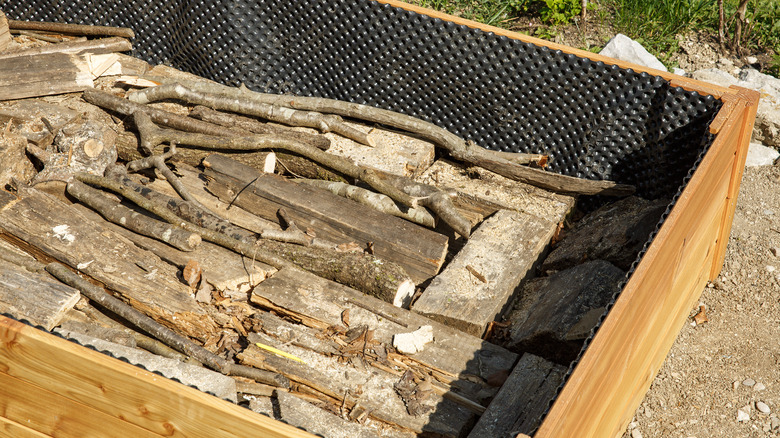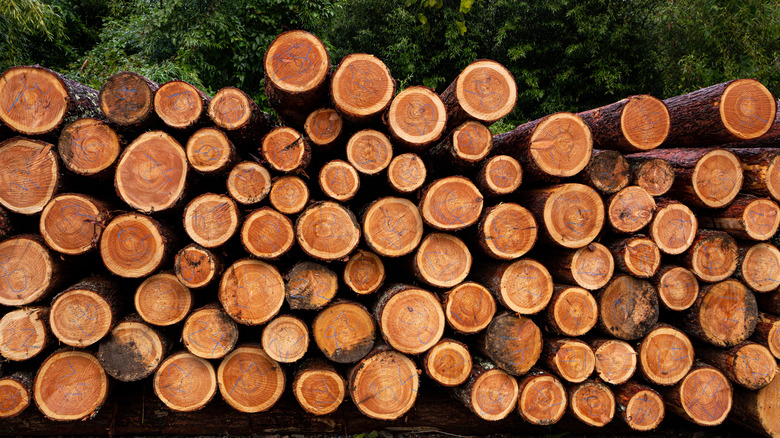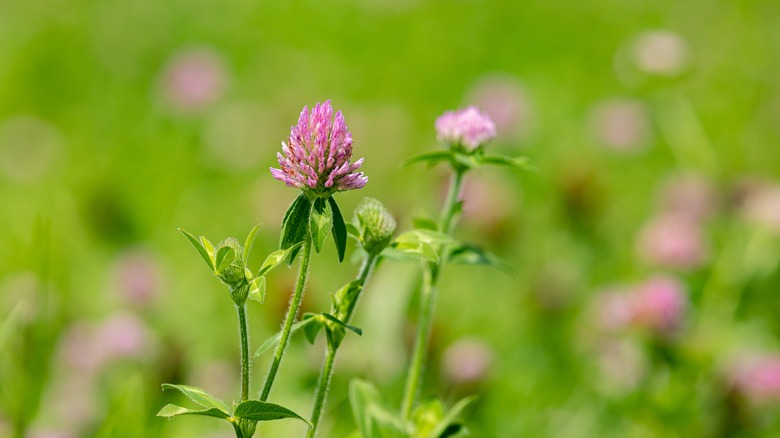What You Should Know Before Adding Logs To A Raised Garden Bed
You may have heard of adding compost to your raised garden beds or even crushed up eggshells, but have you heard about adding logs? As it turns out, you can add huge chunks of logs or even chopped up tree stumps to your raised garden beds and it'll turn into a nutrient rich soil for your plants over time. This process is actually called hügelkultur, meaning "mound culture" in German. There are a few things to know before you repurpose an old tree stump in this way, such as what type of logs to add, which ones to avoid, and how to account for nitrogen depletion caused by the logs as they decompose.
While adding logs to your raised garden bed may seem pretty straight forward, being aware of what you can do to maximize your success with this German gardening method will ensure that your efforts aren't for nothing and that you won't end up with log filled garden beds that don't benefit your plants in any way.
Choose the right logs for your garden bed
Hügelkultur relies on logs to be the foundation of the bed before the soil and other organic matter come into play, so the last thing you want to do is fill your beds with the wrong type of wood that you'll have to dig up and replace if you add the wrong ones. As such, it's important to choose the right type of logs to fill your garden bed. These logs should be large and a mix of hard and soft wood. The best types are alder, apple, cottonwood, maple, and oak. If possible, prioritize using slightly rotted or rotting wood as these will decompose faster compared to fresh, younger wood.
Cedar and locust woods especially, are slow to rot and should be avoided. Additionally, there are some other types of wood to avoid like treated wood and those that emit toxins that can harm your plants' growth. Black walnut, for example, is known to emit toxins that can transfer to your soil as the wood decomposes and thus, into your plants. Lastly, hügelkultur is a process where the logs will continuously erode over time. This will cause your soil to sink, so you may want to learn how to make your own DIY compost that should be added before every planting season to preserve the bed.
Beware of losing nitrogen from your soil
One trait about using a method like hügelkultur to fill your raised garden beds that not many people are aware of is that adding wood to the bed can cause nitrogen loss. Softwood logs that are just starting to decompose are especially known to heavily feed on nitrogen from the soil, so compensating for this loss is critical to the health of the plants you choose to grow in your raised garden bed. This is because nitrogen is a key macronutrient for plants that gives them their vibrant, green color and regulates plant growth.
To help offset this nitrogen loss, legumes are the best type of cover crop to include in your bed. You can choose from clovers, field pea, hairy vetch, and sunnhemp, as well as soybeans. Since these crops are high nitrogen producers, the plants are constantly replenishing nitrogen while the decaying wood is absorbing that nutrient from the soil, allowing your soil's nitrogen stores to be maintained as much as possible.


